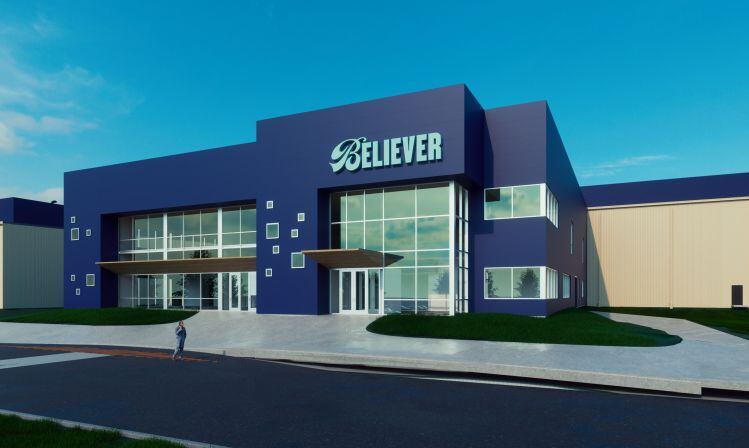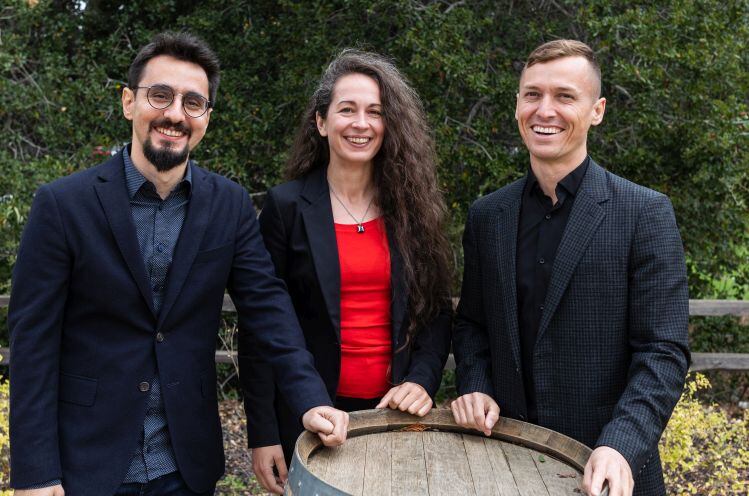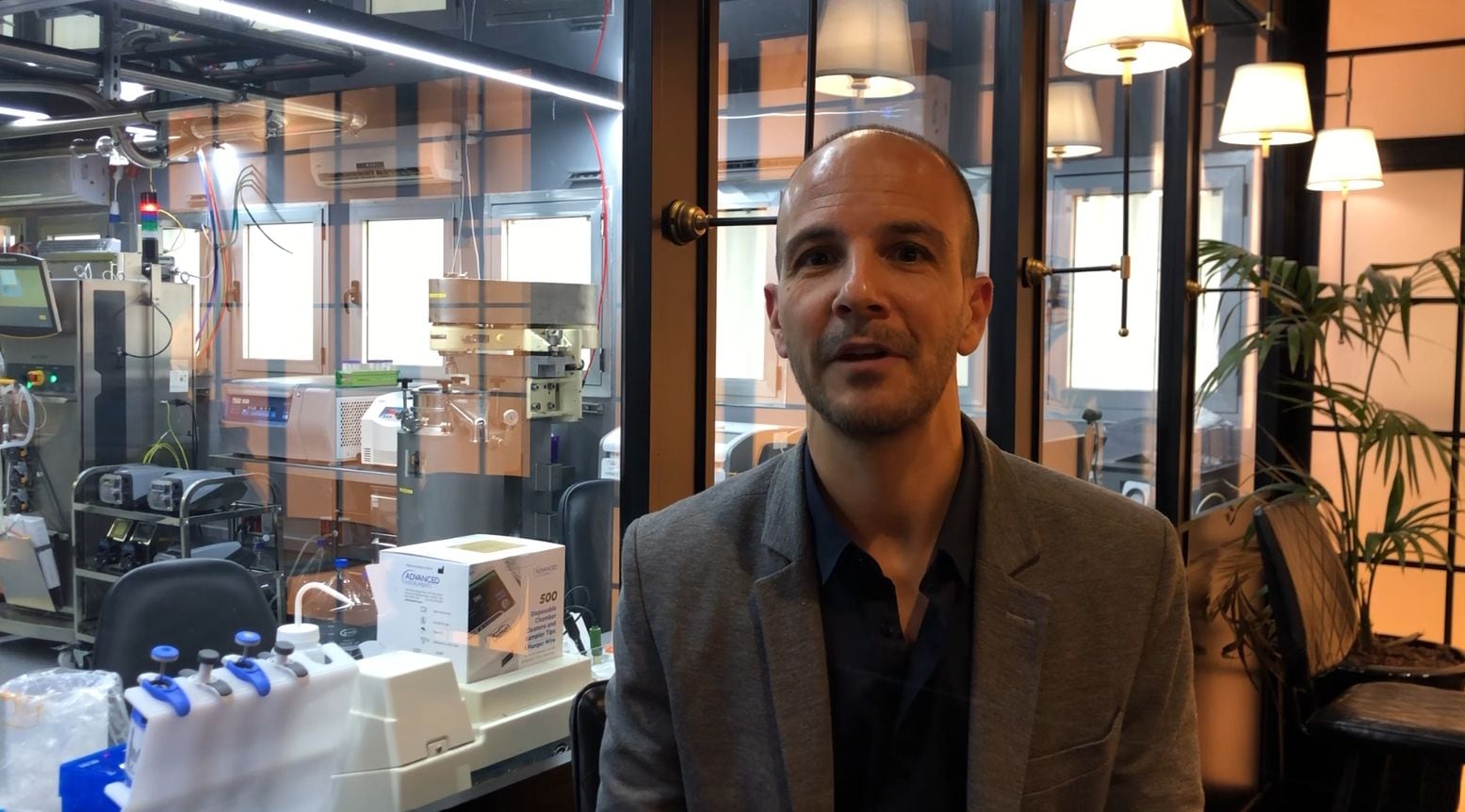The LCA - published in the peer-reviewed journal Sustainability - was conducted by researchers in the Department of Chemical and Biomolecular Engineering at Ohio State University and funded by San Leandro based SCiFi Foods, SCi-Fi Foods, which believes it has “a pretty clear shot at being the first company to bring cultivated beef to the market in the US.”
The startup – which has developed bovine cell lines that can grow in single-cell suspension without microcarriers, enabling higher cell densities - is building a pilot plant in San Leandro it hopes will be operational by the end of 2023, with plans to launch blended burgers in 2024, pending regulatory approval.
Blended product had 87% fewer GHG emissions, 39% less energy, 90% less influence on land use, 96% less water use
The LCA compared the environmental impact of a blended burger containing 50% water, 33% plant-based ingredients (soy protein, coconut oil etc) and 17% cultivated meat (fat and muscle) with a conventional beef patty.
As some parts of the process post-production - cold storage, packaging, and distribution – are likely to be similar for cultivated and conventional meat, the researchers conducted a ‘cradle to the gate’ analysis, accounting for environmental impacts from raw materials to production.
It found that the hybrid burger generated 87% fewer greenhouse gas emissions, required 39% less energy, had 90% less influence on land use, and 96% less water use than conventional beef and had a “a life cycle environmental impact that is comparable with plant‐based commercialized burgers that are currently available.”
The LCA did not, however, provide a straight comparison between a 100% cultivated meat burger and a 100% conventional beef patty.
Blended burger Regular beef patty % Reduction
- GHG emissions (kg CO2-eqiv) 3.52 30.5 88.5%
- Energy use (MJ) 48.94 78.6 37.7%
- Land use (m2a eq) 8.66 92 90.6%
- Water use (m3 eq) 0.06 1.93 96.9%
According to SCiFi Foods co-founder Joshua March, the study adds to a small body of research in this field and will help to address questions about the environmental footprint of cultivated meat.
“It’s one thing to say that it's better for the environment and another to actually have the data to back it up that’s published in a peer-reviewed journal,” he told FoodNavigator-USA.
Figures for a hypothetical plant?
As SCiFi Foods has not yet constructed a large facility, the data it provided to inform Ohio State’s analysis is based on a techno-economic model using data from its lab-scale operation to predict how a large-scale facility might behave.
When asked how reliable the data might therefore be, Bhavik R. Bakshi, Morrow Professor of Chemical and Biomolecular Engineering at Ohio State University and co-author on the paper, told us: “Our analysis is based on laboratory and pilot plant data and could be a 'worst-case' [scenario]. This is because commercial operations are usually more efficient than pilot plant operations."
Where it was not possible to find reliable LCA data on some of the growth media components or plant-based ingredients in the final products, meanwhile, the Ohio State researchers found substitutes with a comparable footprint based on publicly available data (eg. data on lysine production via industrial-scale fermentation was used to predict LCA data for some growth factors produced recombinantly), he said.
"Transparent information disclosure is necessary to understand environmental impacts better. Precise LCA depends on whether or not data is included in the inventory database. To confirm the reliability of these data, voluntary participation from companies is required, and we believe that a lot of investment should be made in the investigation accordingly. By securing these highly reliable data and performing more rigorous LCA by updating many existing assumptions, it will be possible to analyze the environmental impact better and contribute to future system design."
'If you move to 100% cultivated beef, the energy usage will be higher [than conventional beef] the overall GHG emissions will be about the same, and the water and land use far less'
In the production process for cultivated meat, the most energy intensive steps are heating the bioreactor to keep the animal cells at body temperature 24:7, and generating high-pressure steam to sanitize the bioreactor between runs, said March at SCiFi Foods, who noted that earlier studies showed cultivated meat had far lower global warming potential, eutrophication potential, and land use than that of beef, but higher industrial energy use.
According to March: “This demonstrates the importance of ensuring that commercial scale facilities are power renewably, but this study does not assume the exclusive usage of renewable energy and even if you’re just using a typical kind of energy mix in the US, our blended product would still generate almost 90% fewer emissions than conventional beef.”
But is that simply because most of the burger is plant-based? And what would the comparison look like if you moved to 100% cultivated beef vs conventional beef?
“If you moved to 100% cultivated beef,” he said, “the energy usage would be higher [than conventional beef] but the overall GHG emissions will be about the same and the water and land use far less.”
'The biggest issues with beef, from a climate perspective, are land use changes caused by deforestation and methane emissions'
So does that make cultivated meat seem less compelling from an environmental perspective, if the GHG emissions are the same and energy use higher than conventional beef, even if land and water use are lower?
In other words, is the SCiFi Foods burger only more environmentally-friendly than a regular beef burger because it is using a pretty small amount of cultivated meat?
Not according to March: "100% cultivated meat would also be a huge win for the environment, solving deforestation and methane emissions, and being zero emissions overall as long as it uses renewable energy. The biggest issues with beef, from a climate perspective, are land use changes (caused by deforestation—80% of deforestation in the Amazon is related to cattle) and methane emissions, the most potent greenhouse gas.
"If the only thing cultivated meat did was switch 100% of beef emissions into electricity, that would be an incredible win for the environment, as then it can be powered renewably, enabling zero greenhouse gas emissions."
He added: "The LCA shows that our blended burger has 87% fewer emissions than conventional beef even without renewable energy; the reality is that this will be higher as we will ensure that our 'energy usage' is from renewables. Ultimately the only way we can decarbonize the world is to move everything to electricity, and then power it all renewably."
Why start with beef?
As to why SCiFi Foods has opted to debut with beef, March said he could have opted for something more exotic with a more premium price tag, but said that in the first instance, beginning with something as familiar as a burger made sense.
“The fact it’s cultivated means it's already one step out from what people are used to and if you come up with something totally novel, you're asking them to make two leaps. The other thing is that beef has a huge environmental impact, so it seemed like a good place to start.”
Asked whether the recent publication of the FDA’s scientific memo explaining how it had assessed UPSIDE Foods’ process to make cultivated chicken had helped other startups understand what the agency was looking for, he said:
“That actually was great because it gives us and anyone else in the industry basically a roadmap; this is exactly what you need to submit to the FDA and how they want to see it, so it saves a lot of back and forth with the FDA.”
Most first wave cell-cultured meat products will be hybrid
Speaking to us in July, March estimated SCiFi Foods would be able to produce a blended plant-based and cultivated meat burger (in which the cultivated portion would account for less than 20% of the burger) for under $10 at the pilot facility (capacity: 1-2 million burgers annually), with this potentially decreasing to $1 a burger in the “first large-scale production.”
He did not specify the specs for ‘large-scale’ at the time, although he told us this week that the LCA data in the Ohio State study was based on the assumption of a “gen one plant with 40,000-liter bioreactors” churning out “100 million burgers a year”
But does a slurry of bovine satellite cells added as an ingredient to a predominantly plant-based burger really deliver on the promise on cell cultured meat for consumers?
According to March, who points out that the first wave of cultivated meat products will be dominated by hybrids for both cost and technical reasons, even a small amount of animal cells added to a primarily plant-based burger creates a significantly more meaty product.
“We regard it as an ingredient. But if you cook it, it smells and cooks like meat and even a small amount has quite a transformative effect [on a predominantly plant-based burger], so we’re talking about pretty small percentages in terms of creating a product that actually smells and tastes really beefy.”
He added: “What's clear now is that the market size for meat alternatives is fundamentally limited by taste, so we think we have the ability to be quite transformational in the meat alternatives space and we can do that with our blended approach, which is going to work for a lot of products.”
Source: Sustainability 2071-1050/14/23/16133 2022, 14(23), 16133
Paper: Environmental Life Cycle Assessment of a Novel Cultivated Meat Burger Patty in the United States
Authors: Kim Sunghoon and Bhavik R. Bakshi (Ohio State University), Adam Beier and H. Brett Schreyer (SCiFi Foods).




